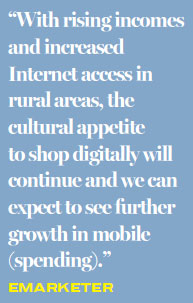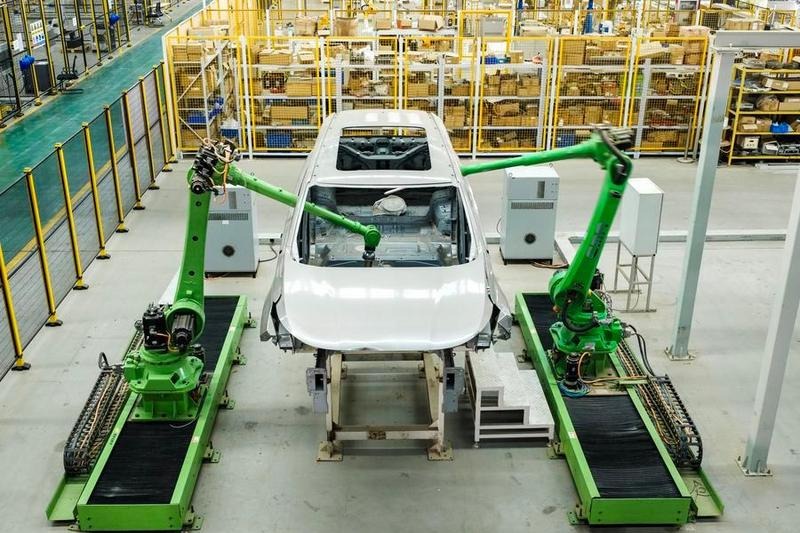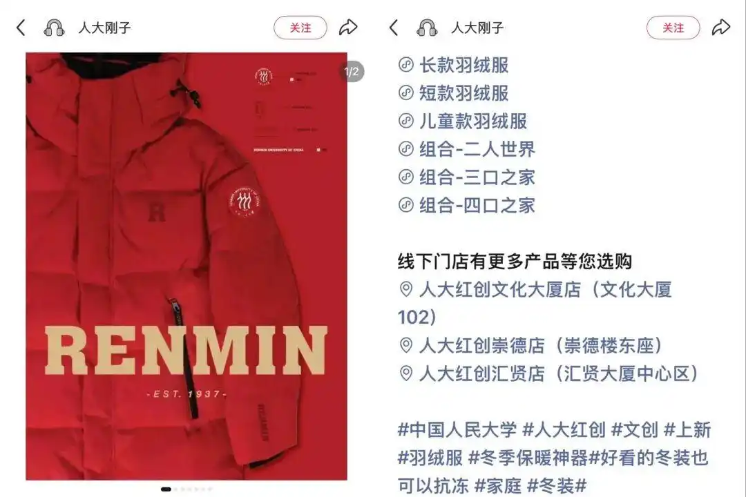At the forefront of change

Booming e-commerce sector in China gives glimpse into the future of global retail trends
The slowing of China's economy has had little impact on its consumers. Analysts say consumer confidence has remained resilient as salaries rise and unemployment remains low.
China's e-commerce market is expected to top $1.13 trillion (961 billion euros; £880 billion) this year, and will account for roughly 23 percent of total retail sales. And growth is likely to continue, with e-commerce accounting for 41 percent of all retail sales in China by 2021.
China is already the world's biggest e-commerce market. The country's digital marketplace, technology platforms and online evolution have enabled it to leapfrog the more traditional retail environment in the West.
| Students line up for their parcels, mostly bought during Singles Day, at a university in Binzhou, Shandong province, on Nov 17. Launched in 2009, the online shopping event is held annually on Nov 11. Gao Limeng / For China Daily |
As e-commerce in China develops, it can provide a glimpse into the future of global shopping.
"What China Reveals About the Future of Shopping", a report released in May by Boston Consulting Group, said that "when Amazon and e-tailing disrupted US shopping in the 1990s, retailers and consumers alike had to rethink their deeply ingrained habits".
"By contrast, physical retail in China was less developed. The digital revolution coincided with the growth of disposable income and consumption. As a result, e-commerce quickly became the norm, and its development was fast-tracked to the point where China pulled ahead of the West," the report said.
Not only that, China became a pioneer in mobile commerce, with many consumers skipping the personal computer era entirely and going straight to smartphones.
"This may explain why Samsung phones with larger screens took hold in China well before they did in Western markets," the report said.
According to industry estimates, online purchases made with mobile devices will account for 74 percent of total e-commerce in China by 2020, compared with just 46 percent in the United States, Boston Consulting Group said.
Global management consulting company McKinsey & Co said, "The days of broad-based market growth are coming to an end."
In its China consumer report for 2016, "The Modernization of the Chinese Consumer", analysts said that Chinese consumers are becoming "more selective" about where they spend their money.
They are shifting from products to services and from mass to premium segments as they seek a more balanced life where health, family and experiences take priority.
The report said the popularity of international travel is "astounding" among Chinese consumers, as is their adoption of trends such as mobile payments.
"In short, our latest research suggests we are witnessing the modernization of the Chinese consumer, and that will only make the market more challenging for consumer goods companies. But for those able to get it right, the rewards may be substantial," the report said.
US-based market research company eMarketer forecasts that e-commerce sales in China this year will grow by about 33 percent.

Oscar Orozco, senior forecasting analyst with eMarketer, says China's growth "comes from the continued adoption of e-commerce platforms in many four-to five-tier cities".
China tends to be at the forefront of trends when it comes to retail and e-commerce.
Analysts say aspects of new retail in China could catch on globally, especially in Western Europe and North America, as they become more tried and tested in China.
"However, it remains to be seen what exactly this will be," Orozco says.
Matthew Crabbe, research director at Mintel, says online retail in China is still growing fast. The online retail market is expected to reach 6.4 trillion yuan ($945 billion; 803.7 billion; £734 billion) this year, and perhaps about double that by 2022.
China's booming e-commerce market can be attributed in part to the proliferation of dominant domestic marketplaces, such as Alibaba and JD.com, which took advantage of the country's undeveloped traditional retail infrastructure.
These online marketplaces, in particular, positioned themselves to capitalize on growing consumer demand, eMarketer said. Alibaba's Alipay established its own payment system, while JD.com set up its own logistics network.
"In addition, with rising incomes and increased internet access in rural areas, the cultural appetite to shop digitally will continue and we can expect to see further growth in mobile (spending)," eMarketer said.
One area of e-commerce set for continued growth is haitao, which means "buying overseas". Haitao is popular among China's growing middle class, who buy from e-commerce sites in developed countries.
Most goods bought overseas are usually shipped through an intermediary company to China, since most foreign e-commerce sites do not offer direct shipping services to the country.
Analysts say that foreign retailers and brands looking to build greater sales in the China market must shift focus and set up local online, in-store and delivery services. This is to assist Chinese customers, rather than selling directly from overseas.
The online retail market (and with it, the haitao market) remains dominated by Alibaba's Tmall, which has an estimated 50 percent share of both, according to Mintel's Crabbe.
Alibaba's Tmall Global portal has led the way in attracting more global brands to China by providing not only the local online storefront to gain customer attention, but also the back-end logistics to help with payments and filling orders.
Crabbe says others are catching up though, and JD.com is proving to be among the potent competitors for Tmall, along with Suning and Vipshop.
"While JD.com and Suning have both expanded their sectoral offering to a much wider market, others continue to specialize in key sectors, such as Vipshop for high-end foreign fashion brands," he says.
"The growth in online grocery sales has created potential for more foreign food brands and retailers."
US-based Costco, Sainsbury's in the United Kingdom and Australia's Woolworths have all made an online push in the Chinese mainland via Tmall Global and JD.com International, creating logistics capabilities through Hong Kong.
"Foreign retailers that already have a physical presence inside China are also trying to reach more Chinese consumers with their imported products and brands (both online and in-store)," says Crabbe.
"But with so many foreign retailers and brands now in the market, standing out from the crowd is getting more difficult."
Analysts say this is a common problem across the online retail market in China. It is also forcing retailers and brands to become more creative in ways to engage with consumers.
China's e-commerce market is expected to grow by 15 percent annually by 2020, according to a report by Worldpay, a provider of secure payment-processing services.
E-wallets were the most popular payment method in China in 2016, with an overwhelming 56 percent of market share, followed by debit and credit cards, both with 11 percent of the payments market.
"The growth of the Chinese e-commerce market is highly significant and can be best exemplified by China's recent shopping spree, the Double 11, in which sales volumes achieved a record," Tang Kok San, manager in charge of Worldpay's business in China, said in the report.
Double 11, also known as Singles Day, is the world's biggest online shopping event. It was launched by Alibaba in 2009 and takes place annually on Nov 11.
karlwilson@chinadailyapac.com
(China Daily Africa Weekly 08/25/2017 page8)
Today's Top News
- Foreign ministers of China, Egypt call for Gaza progress
- Shield machine achieves Yangtze tunnel milestone
- Expanding domestic demand a strategic move to sustain high-quality development
- Xi hears report from Macao SAR chief executive
- Xi hears report from HKSAR chief executive
- UN envoy calls on Japan to retract Taiwan comments































